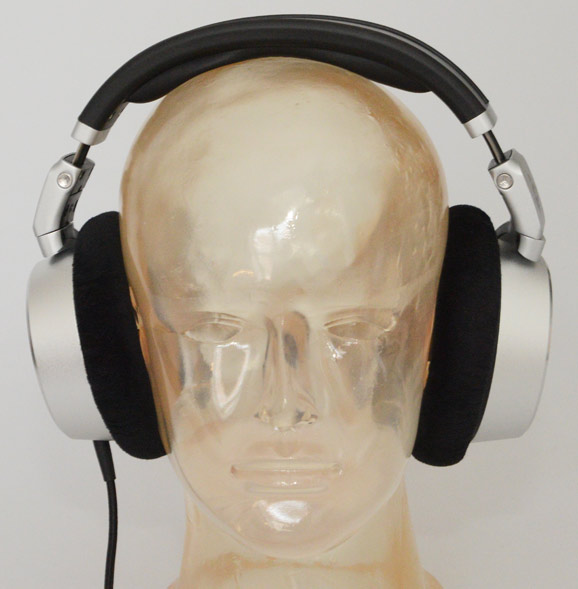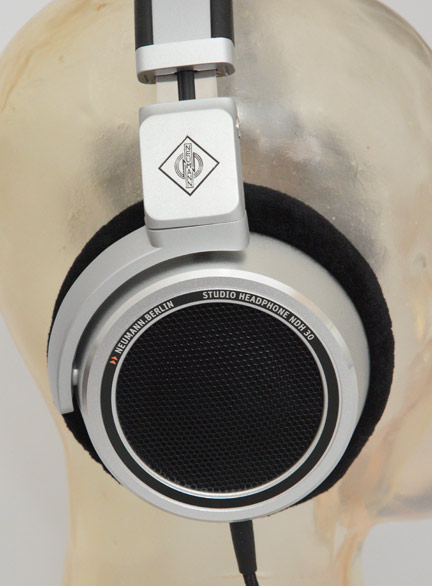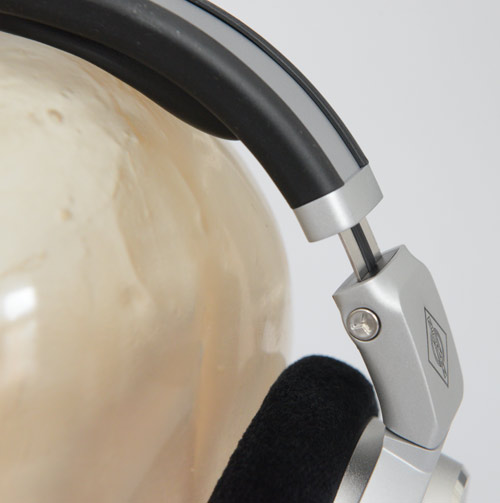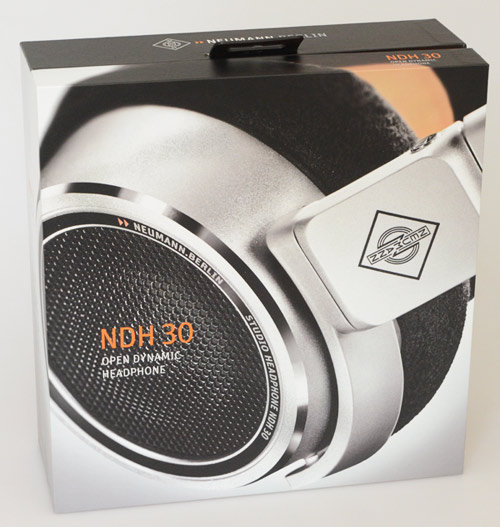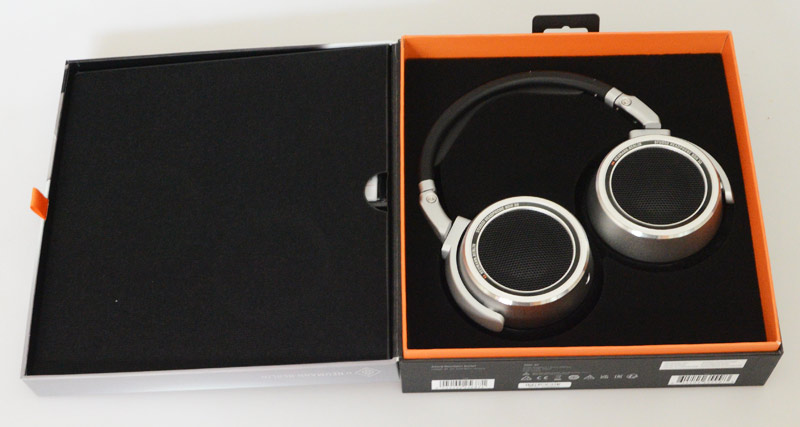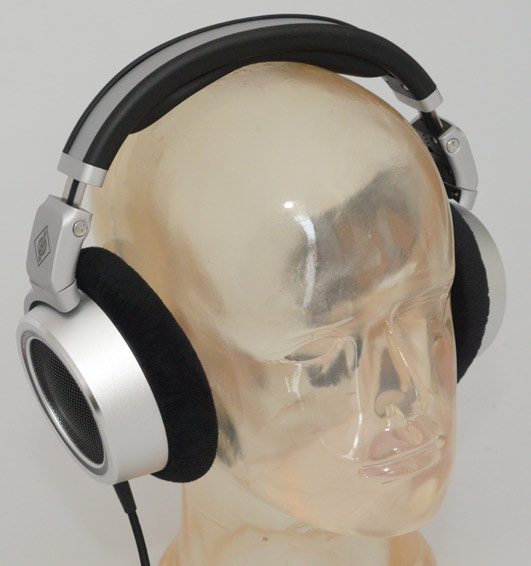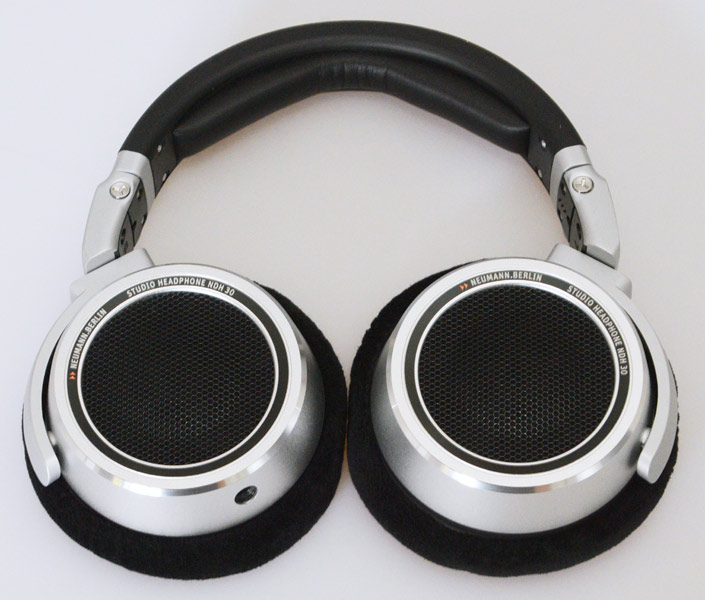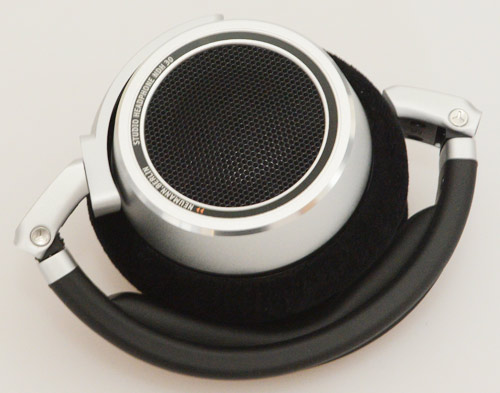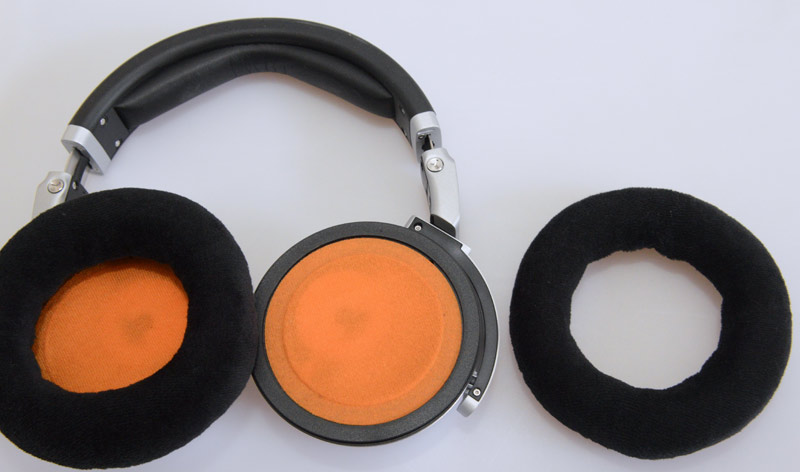Neumann NDH 30
Open studio headphones
Author and photos: Peter Kaminski
Neumann presented its first acoustically closed headphones, the NDH 20, at the NAMM Show 2019. In May 2022, Neumann is following up with the NDH 30, an acoustically open headphone.
Concept
Although a 38 mm transducer (neodymium magnet material) is also used, it is not the same as in the NDH 20. Neumann has chosen a new transducer here.
The nominal impedance is 150 ohms (120 ohms for the NDH 20), and the sensitivity is 104 dB SPL (114dB SPL for the NDH 20). Neumann specifies the frequency range for the NDH 30 as 12Hz ... 34 kHz (5 Hz ... 30kHz for the NDH 20). According to the manufacturer, the rated power is 200 mW, and the maximum load is 1 W (identical to the NDH 20). At 0.03% (at 1kHz and 100dB SPL), the total harmonic distortion is even better than that of the NDH 20 (0.1%).
Mechanically, the two headphones are more similar. The headband and ear cups are identical, except for the perforated cover on the ear cups, which is used to ensure an acoustically open design.
As with the NDH 20, metal has also been used in the NDH 30 (spring steel band and aluminum and plastic fittings, see illustration above). The folding mechanism is also the same as that on the NDH 20. More on this later.
Scope of delivery
The NDH 30 is delivered in a cardboard box with a high-quality, fabric-covered, three-meter-long connection cable and two replacement ear pad covers.
The cable connection is on the right side of the earpiece. The cable can be locked in place. However, the NDH 30 has a special feature for the cable: the ground connections for the two stereo channels are separate and are only connected at the jack plug on the device side. The jack plug on the device side is a 3.5-mm jack plug, and a screw-on 6.3-mm jack plug adapter is included.
In practice
The contact pressure of the headphones is 5.5 to 6.8 newtons, which is identical to the NDH 20. In general, the headphones do not differ in terms of wearing comfort. They are extremely comfortable to wear, even during very long mixing sessions. The ear pads generously enclose the ears. The NDH 30 weighs 352 grams, making it slightly lighter than the NDH 20 (390 grams).
The ear cups can be rotated 90 degrees, allowing the headphones to be placed on a surface with the ear pads facing down (see image above).
They can also be folded, so they only require a small space for transport (see fig. above). The marks to identify the left and right ear cups are somewhat inconspicuously in the lower part of the headband.
With many headphones, replacing the ear pads (see fig. above) is a technical challenge. This is not the case with the NDH 30. However, replacing the padding on the Neumann NDH 30 is easy and takes less than a minute.
During test listening, it quickly becomes apparent that these headphones were not designed for the hi-fi/consumer market. We tested the headphones and comparison headphones again on the SPL Phonitor 2. The sound of the NDH 30 is very honest and neutral. Both the bass and treble are not boosted, but they are well proportioned to ensure an accurate assessment of the material being listened to. Personally, I really like the NDH 30, especially for mixing music productions. Thanks to the included cable, the stereo channel separation is very high and subjectively higher than with the NDH 20.
Transients are reproduced naturally and are not exaggerated. The sound character can be described as soft, but without obscuring anything. The frequency range at high frequencies is also slightly higher than with the NDH 20, which is probably due, among other things, to the polymer blend membrane material used. The resulting higher rigidity of the membrane material is probably one of the reasons why I like the transient reproduction of the NDH 30 more than that of the NDH 20. The membrane material is also likely to play a significant role in achieving a lower distortion factor. Overall, I find the NDH 30 better for mixing and mastering than the closed NDH 20, which is more suited as a high-quality headphone for musicians and studio monitoring.
The trend is toward headphones with relatively low impedance. Although the impedance of the NDH 30 is lower than that of the NDH 20 at 30 ohms, it is still in the mid-range of current headphones on the market. The sound pressure is significantly lower than that with closed NDH 20 and also approx. 6 to 7dB lower than with the acoustically open Austrian Audio Hi-X65. However, as these are studio headphones, this is not a problem at all. Even when connected to a laptop, the NDH 30 still produces sufficient sound pressure.
Our author Raphael Tschernuth also tested the NDH 30 and added the following comments: “A direct comparison with my Neumann MA-1 system shows that its linear sound character is also found in the NDH 30. The signal from the monitoring speakers is only enriched by room reverberation, and the subwoofer is slightly more voluminous in the bass range. However, at the same volume, the two systems are so similar that it can be almost impossible to tell them apart. The other open headphones in my studio have their own sound, which can cause uncertainty when working if you don't know which system you can really trust. Switching between the NDH 30 and monitors optimized with the MA-1 system, on the other hand, raises no questions and gives you the confidence that what you hear is what you get on the speakers.” This will certainly also please users on the move who use an MA-1 system in the studio and the NDH 30 when they are out and about.
Conclusion
The Neumann NDH 30 costs around $650, which is significantly more than the NDH 20. However, this is also because the NDH 30 costs 650 euros, which is significantly higher than the NDH 20. However, this is also due to the fact that the NDH 30 is not simply an acoustically open version of the NDH 20, but a completely new development in terms of the driver, which has definitely paid off in terms of sound quality, as it was necessary to develop a transducer optimized for open acoustics and its requirements.
 How to resolve AdBlock issue?
How to resolve AdBlock issue? 